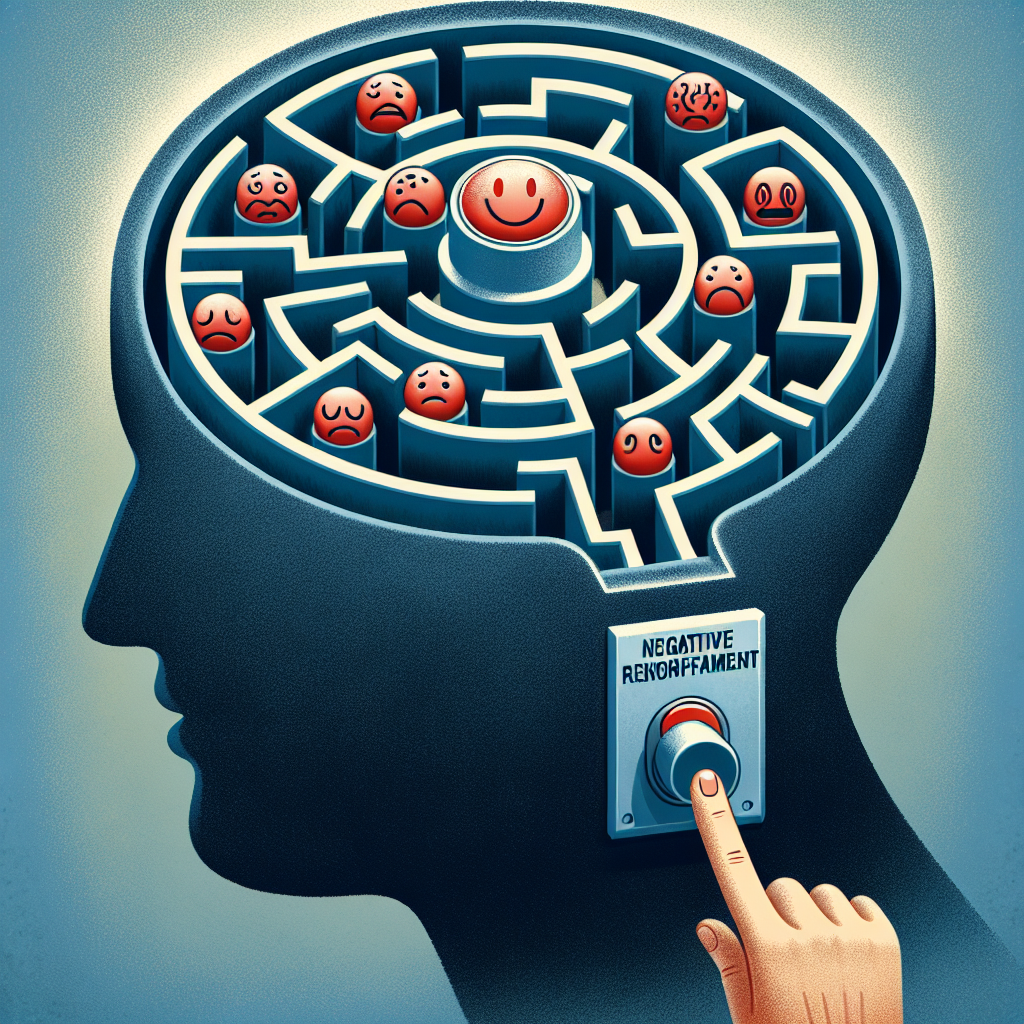
Introduction
In a world saturated with stimuli and choices, understanding the mechanisms that guide our behaviors can lead to profound insights about ourselves and our interactions with others. One particularly intriguing concept in psychology is negative reinforcement. It’s often misunderstood as a punishment, but its true essence is far more nuanced and influential. In this article, we will explore Negative Reinforcement Explained: How It Shapes Our Responses—delving into its mechanisms, applications, and implications in our daily lives.
Understanding negative reinforcement is essential not just for psychologists, educators, and parents, but for anyone interested in the dynamics of behavior modification. Whether you’re trying to influence your child’s study habits or manage workplace productivity, grasping how negative reinforcement shapes responses can empower you to effect positive change in your life and the lives of others.
What is Negative Reinforcement?
To kick off our exploration, let’s clarify what negative reinforcement really means. In simple terms, negative reinforcement involves removing an aversive stimulus to increase a desired behavior. Unlike punishment, which aims to decrease a behavior, negative reinforcement encourages actions by eliminating unfavorable conditions.
Key Components of Negative Reinforcement
- Aversive Stimulus: This is something unpleasant that can be removed.
- Behavior: The action taken to eliminate the aversive stimulus.
- Consequence: The removal of that unpleasant factor reinforces the behavior.
Real-World Example
Consider a student who procrastinates on homework. If the student studies and completes assignments early, they might avoid the stress (the aversive stimulus) of cramming for tests. The elimination of stress reinforces their good study habits.
| Component | Example |
|---|---|
| Aversive Stimulus | Stress from cramming |
| Behavior | Completing assignments early |
| Consequence | Reduced stress |
How Negative Reinforcement Shapes Our Responses
Psychological Foundations
Negative reinforcement is rooted in behaviorism, a school of thought that focuses on observable behaviors rather than mental states. Pioneers like B.F. Skinner demonstrated that behaviors followed by favorable outcomes are strengthened, while those followed by unfavorable outcomes are weakened.
Case Study: B.F. Skinner’s Pigeon Experiments
In the mid-20th century, Skinner conducted experiments with pigeons, demonstrating that animals could learn behaviors through reinforcement. By using a lever that removed a mild electric shock when pressed, the pigeons quickly learned to engage with the lever to avoid discomfort. This classic example illustrates how negative reinforcement can lead to the development of particular responses.
Application in Everyday Life
Parenting: Parents often use negative reinforcement to encourage desired behaviors in children. For instance, a parent might allow a child extra playtime if they complete their chores. The aversive stimulus (the lack of playtime) is removed when the child completes their tasks, increasing the likelihood of chores being done in the future.
Workplace Productivity: Employers can leverage negative reinforcement by reducing mandatory overtime for employees who meet their targets. By removing the burden of additional hours, employees are motivated to work efficiently.
- Training Animals: Negative reinforcement is commonly used in animal training. For example, a dog that pulls on its leash may experience discomfort; however, if it walks calmly, the discomfort is removed. This technique enhances the desired behavior of walking beside the owner.
A Closer Look: The Neuroscience Behind Negative Reinforcement
Negative reinforcement shapes our responses not just behaviorally but also neurologically. Research indicates that the brain’s reward circuitry responds to the removal of negative stimuli similarly to how it reacts to the presentation of positive rewards.
Dopamine and Reward Systems
When an aversive condition is alleviated, dopamine—often referred to as the "feel-good" neurotransmitter—is released, providing a sense of satisfaction and reinforcing the behavior that led to the removal of the unpleasant stimulus.
Chart: The Cycle of Negative Reinforcement
| Phase | Description |
|---|---|
| Trigger | An aversive stimulus presents itself |
| Behavior | A response is initiated to avoid the stimulus |
| Outcome | The unpleasant condition is removed, reinforcing the behavior |
| Repeat | The behavior is likely to be repeated upon encountering a similar trigger |
The Benefits and Drawbacks of Negative Reinforcement
Benefits
- Encourages Positive Behavior: By removing unpleasant conditions, negative reinforcement can lead to the emergence of beneficial behaviors.
- Practical Applications: It can be effectively used in various settings, including education, workplaces, and behavioral therapies.
Drawbacks
- Dependence on Aversive Stimuli: Relying too heavily on negative reinforcement can foster a reactive mindset rather than a proactive one.
- Misinterpretation: Individuals may confuse negative reinforcement with punishment, leading to anxiety or resistance.
Analysis of the Drawbacks
Consider a workplace environment where employees are constantly pushed to meet targets to avoid penalties. This can lead to a stressful atmosphere, potentially diminishing job satisfaction and overall productivity. Striking a balance between positive rewards and negative reinforcement is essential for sustained motivation.
Frequently Asked Questions
1. What’s the difference between negative reinforcement and punishment?
Negative reinforcement removes an unpleasant condition to encourage behavior, while punishment introduces an unpleasant experience to decrease behavior.
2. Can negative reinforcement be effective in all settings?
While negative reinforcement can be effective, its success often depends on the context and individual differences. Understanding the specific environment and the individuals involved is crucial.
3. How can I use negative reinforcement in parenting?
Parents can implement negative reinforcement by removing restrictions or unpleasant consequences when children exhibit desired behaviors, like completing homework.
4. Are there any ethical concerns with negative reinforcement?
Yes, excessive reliance on negative reinforcement can lead to stress and resentment. It’s vital to balance it with positive reinforcement methods to foster a supportive environment.
5. Can negative reinforcement have long-term effects on behavior?
Yes, if used appropriately, negative reinforcement can lead to the development of positive habits. However, it’s essential to monitor its application to avoid negative psychological impacts.
Conclusion
Understanding Negative Reinforcement Explained: How It Shapes Our Responses is vital for anyone looking to influence behavior, whether in personal relationships, educational contexts, or workplace dynamics. By recognizing the role of negative reinforcement, we can better navigate our interactions and create healthier environments.
As you move forward, consider how you can apply these insights in your own life. Whether you’re a teacher, manager, or parent, remember that the key lies in fostering a balance between removing the negative influences and promoting positive behavior. This nuanced approach can lead not just to better outcomes, but also to a more fulfilled and productive life.
As you integrate these concepts, reflect on your behaviors and responses. How can you use negative reinforcement constructively, and what positive changes might result from a deeper understanding of this powerful psychological principle?
















